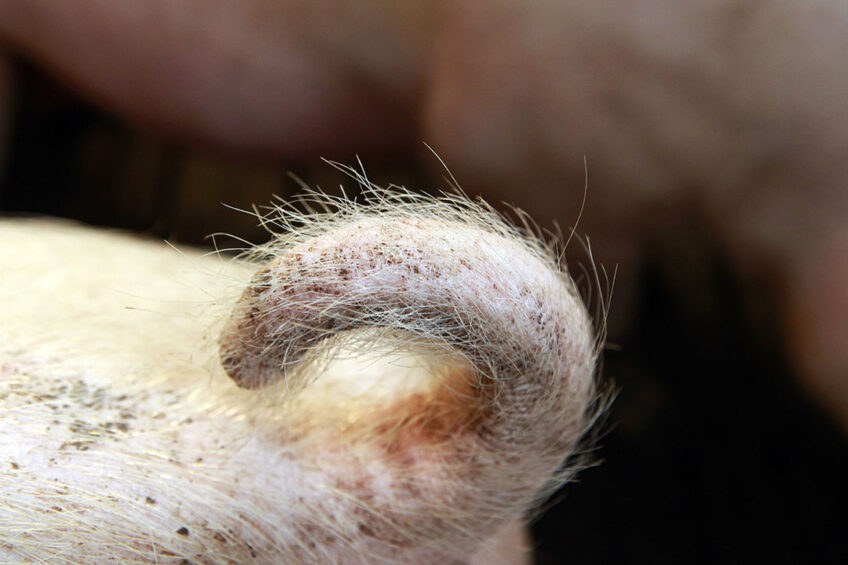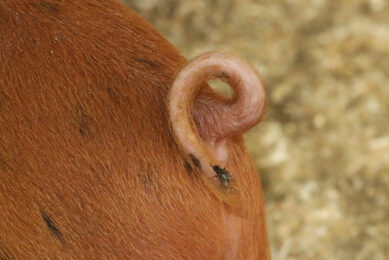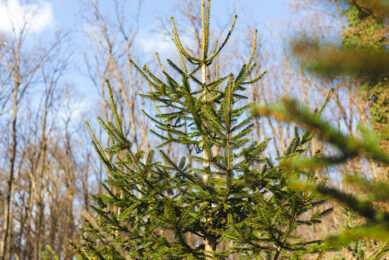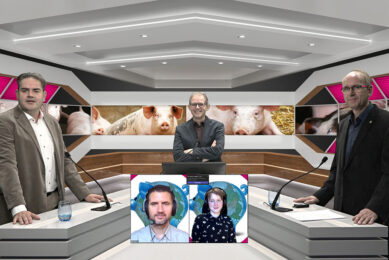Feed, light and manipulating material help to prevent tail biting

Researchers from Sweden have tested the effects of feed, light and access to manipulating material on tail biting in pigs.
Tail biting is a sign of reduced welfare. It causes pain, decreased weight gain, infection, and a strong inflammatory response in the bitten pigs. Tail biting is a multifactorial condition associated with the composition of the feed, competition, ventilation errors, and exploratory behaviour of piglets.
Data collection
The reseachers carried out their study in a high-health farrow to finish herd with 230 sows. Every 19th day, 25 sows gave birth. The non-tail-docked piglets were weaned and transferred to a weaning unit at an average age of 32 days.
Due to the high daily weight gain during the fattening period, and the increasing incidence of tail injuries registered at slaughter, the team adjusted trace elements, amino acids, and levels of fibers to reduce tail biting.
The research team installed artificial illuminations to validate the influence of light length and quality. Pigs had free access to hay silage to test the impact of increased access to manipulative material. Large and solid fodder pellets containing trace elements and fibers were offered on the floor to pigs with signs of anxiety to prevent tail biting.
The researchers registered the number of slaughtered pigs and the number of pigs with tail injuries at slaughter. They also calculated the occurence of tail injuries at slaughter. The team also recorded weight gain during the fattening period, and the incidence of tail injuries for a period of 6 months after the trial ended.
The occurence of tail biting
Supplementation of the feed with amino acids, trace elements, vitamins and fibers, day length, and manipulative material significantly affected the occuence e of tail biting. During the trial, the team asdociated the occurence of tail injuries registered at slaughter with weight gain. However, the day length negatively affected the incidence of tail injuries as well. The shorter the day, the higher the occurence of tail injuries. December had significantly higher incidences of tail injuries, whereas June had significantly lower incidences.
During the adaption period and the trial period the overall incidence of tail injuries registered at slaughter decreased with about 67%. During the post-trial period of 6 months, the overall incidence of tail injuries was 4.3%. This was significantly lower than during the trial period.
Manipulative materials
Misbehaviour may benefit from non-optimised feed that may have been strengthened by an increased exposure to wind and weather. Free access to hay silage decreased the incidence of tail biting. This emphasises the importance of sufficient amounts of manipulating material. However, the manipulative materials must represent novelty to the pigs to keep them interested. Therefore, the team recommended to distribute smaller amounts of manipulative materials at shorter time intervals.
On the other hand, straw may interfere with the manure handling systems. Keeping the amount of straw to a minimum prevents errors in these systems. Around 400 grams of straw per pig per day fulfils the exploratory needs of pigs and reduces the incidence of tail biting.
Exposure to the light from standard fluorescent tubes with an invisible flickering of 30-40% for 14 hours per day increased the incidence of tail injuries. However, the incidence of tail injuries was significantly lower when exposed to non-flickering light for an equal length of time. This indicates the importance of the quality of the light. Moreover, sunlight decreases serum levels of melatonin, and blue light with a wavelength of 446 to 477 nm induces plasma melatonin suppression. Therefore, exposure to blue light should not exceed 14 hours per day due the risk for insomnia induced by a lack of melatonin. In addition, non-flickering light optimised serum levels of melatonin over day and night, and induced tranquility and productivity.
This study showed that it is possible to prevent tail biting injuries in non-docked pigs by supplementation of the feed with amino acids, trace elements, vitamins, and fibers, adjusting stocking density, providing non-flickering illumination, and offering manipulative materials including hay silage. Further studies are necessary to evaluate the impact of melatonin on tranquility and productivity in pigs.
 Beheer
Beheer








 WP Admin
WP Admin  Bewerk bericht
Bewerk bericht